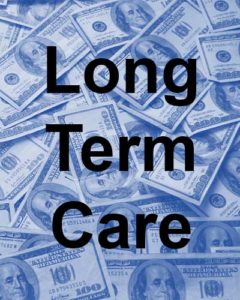in·er·tia (iˈnərSHə): a property of matter by which it continues in its existing state of rest or uniform motion in a straight line, unless that state is changed by an external force
My husband and I hung on to our landline for several years after we’d pretty much switched to cell phones. We rarely used the line but for answering those annoying telemarketing calls. And it cost us a chunk of change every month to keep it. But we had dozens of places where that number was listed as a point of contact, and I simply lacked the motivation to chase them all down… until we moved and changed our address when it became an auspicious time to nuke the line.
Speaking of cell phones… we’ve had the service provider years. It doesn’t cost a lot, but our data plan is so low that it constrains usage. We’ve accommodated the limitation because changing plans would cost an arm and a leg, and changing carriers is a nuisance. Then came the killer app that made switching carriers worth the nuisance factor. As of this writing, it’s a work in progress…
Businesses count on inertia. Don’t believe me? Wait until the first of the year drives hordes of folks to sign up for gym memberships so they can lose weight and get in shape in the new year. Watch how they follow through with their plans for a while before giving up the ghost… yet still paying for their monthly fees. Been there, done that.
It’s easy to let inertia hold sway over these seemingly insignificant decisions. After all, the monthly costs may be relatively small and simply fly under the radar. (For example, a classic membership at Planet Fitness runs $10/month.) But, when you multiply those costs by 12 and consider the years across which unused services stay in the pipeline, those dollars and cents stop making sense. (Four years of a functionally inactive Planet Fitness membership nudges toward $500… and those are after tax dollars!)
 So, I’m starting my year taking a good hard look at all the monthly services that get deducted from our accounts and ask myself: Do we really use these services? If not, are we likely to get on board with them in the New Year? (I’ll set a timer on planned reintroduction of unused services and pull the plug if our good intentions do not materialize.) Are we getting competitive rates for the services we use? If not, what options should we consider?
So, I’m starting my year taking a good hard look at all the monthly services that get deducted from our accounts and ask myself: Do we really use these services? If not, are we likely to get on board with them in the New Year? (I’ll set a timer on planned reintroduction of unused services and pull the plug if our good intentions do not materialize.) Are we getting competitive rates for the services we use? If not, what options should we consider?
I’ll cop to the fact that I don’t like going through the hassle of making changes and that the value of my time is non-zero. But I also know that a few dollars here, a few dollars there, etc. can add up to some real money. Even if I don’t choose to put them in my piggy bank, I can imagine using the funds for a far more memorable experience than lining a vendor’s pockets.
Time to sharpen that pencil and run some numbers!








